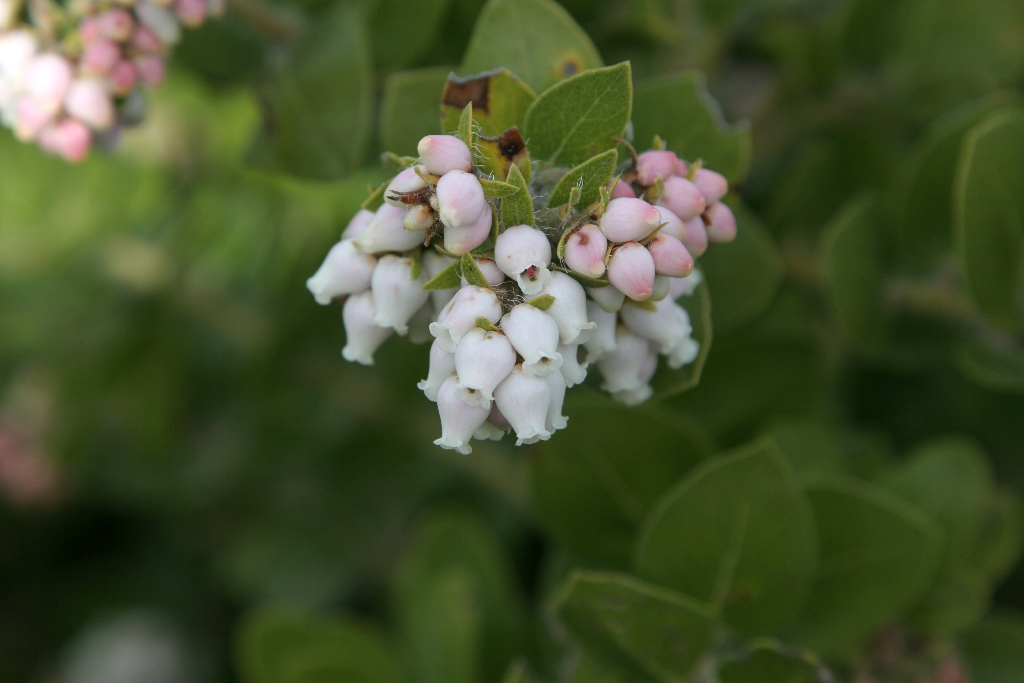
Island Plant Adaptations Guide Stop 4
Fire is an important agent in the evolution of California chaparral. Fire thins and prunes chaparral, removing old growth and releasing nutrients locked up in the woody plants. Some plants, such as island manzanita and chamise, have adapted to fire by developing deep root systems and large, swollen trunk bases called burls. After a burn, these plants regenerate by sprouting from the many buds that were protected in the burls. The deep roots also make these plants ideally suited to hot, dry rocky ridges and slopes.
Certain annuals, such as wild heliotrope, and perennials, such as mariposa lily, are "fire followers" and sprout well only after fire has cleared the chaparral. The seeds of these plants lie dormant until fire removes the shrub canopy, leaving behind a mineral-rich soil and ample sunlight. When the winter rains come, the seeds germinate and begin to grow; their roots anchor the soil and reduce erosion, while their plants carpet the landscape with a profusion of wildflowers. Each spring these annuals return, but are decreased in number as the chaparral regenerates, consuming soil nutrients and forming a closed canopy of brush that covers the land until fire begins the cycle anew.
Is there something we missed for this itinerary?
Itineraries across USA


















































